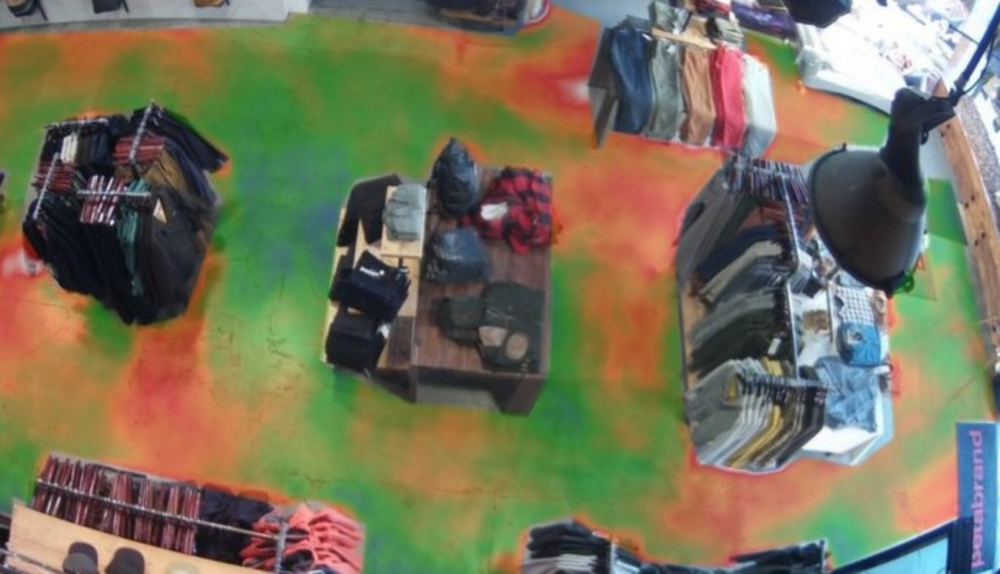In an age of geolocation, customers and companies have never been more in tune. Companies have become more interested than ever about a consumer’s whereabouts and customers have been more willing than ever to share this data for better deals. Location data allows companies to hyper-personalize marketing campaigns, deliver location-based promotions and place timely mobile ads. In return, consumers are able to use geolocation for delivery services, taxi-like services, moving companies, airline updates, food suggestions, clothing tips, fitness tracking and a multitude of other options.
However, a new conversation is taking place between consumer location and company insight, and it is happening in the store. Technology companies are using security camera images to generate heat maps of a shop’s layout and translate the data onto a dashboard.
There are a variety of companies that provide the heat-map technology, such as Prisms Skylabs, Angle Cam, SEQ Security Surveillance Services, InteraLinx and MOBOTIX.
The dashboards use existing store cameras to conduct customer counting, measure occupancy and dwell, generate heatmap, pathmap and traffic visualizations, alongside a comprehensive set of reporting and data integration tools.
For example, the colors on the floor correspond to foot traffic during a particular time period. Red areas are ones lots of people walked in, while green spots had lower traffic.
Retailers can access the technology from any laptop, smartphone or tablet through a suite of web and native mobile applications. Designed for brick-and-mortar outlets, the heat map platform can remotely audit and manage patterns and analytics.
The pattern analytics and data provide the store manager with a clear picture of areas in the store’s layout that garner the best shopper’s attention. In fact, the heat map technology is so specific, it has the ability to spot which item on the table is given the most consumer attention.
The dashboard, which can be accessed in real time, aligns the data with sales, thereby giving managers insight into where shoppers lingers and which items attracted attention and which prompted a purchase. If the item only attracted attention, this specific data will allow a retailer to determine the issue, such as missing size, pricing or quality and make a quick adjustment.








